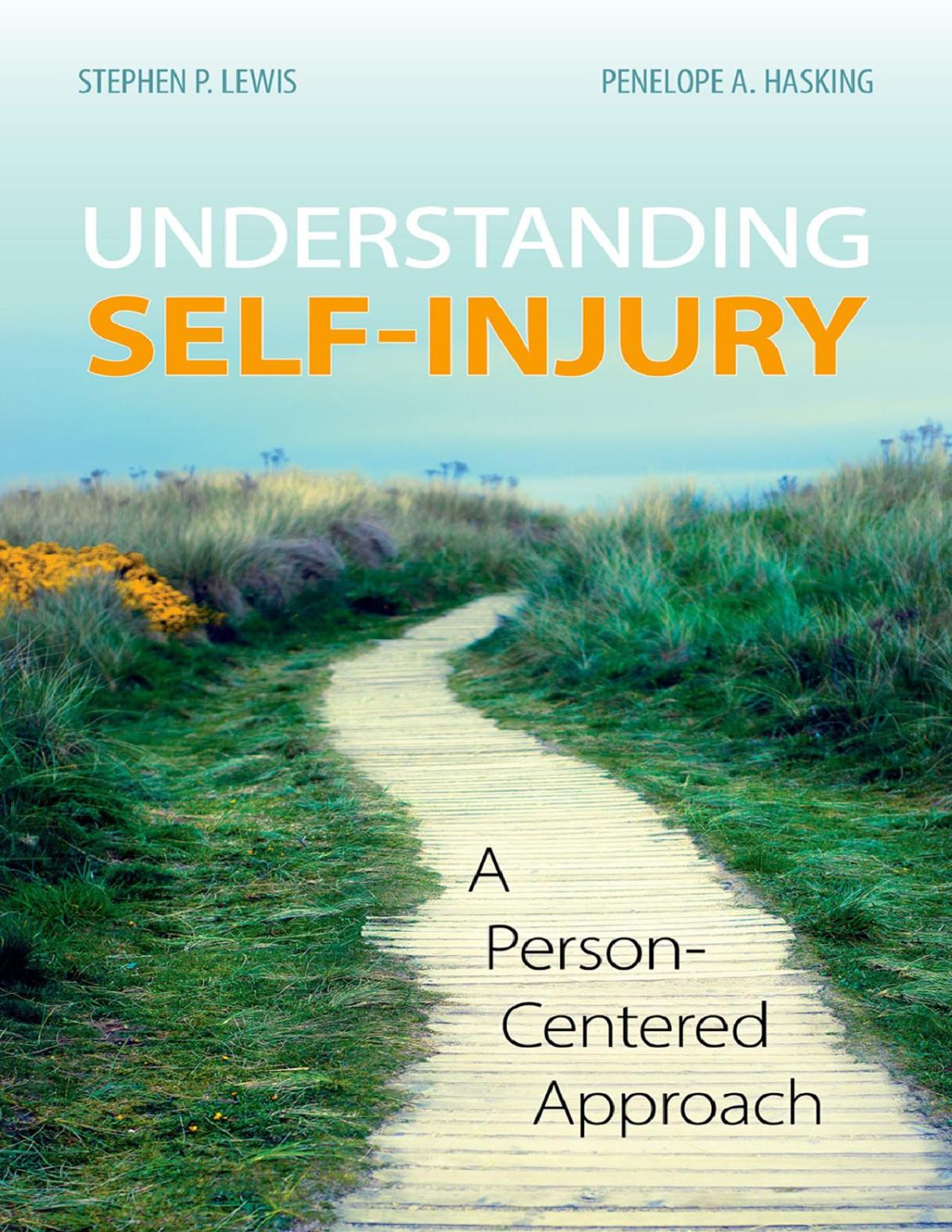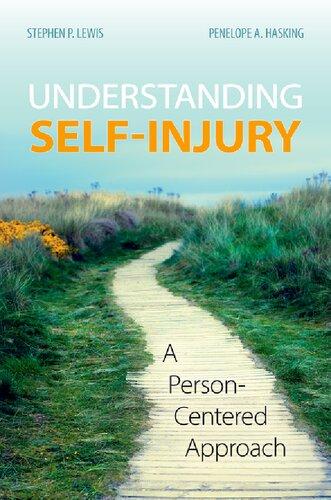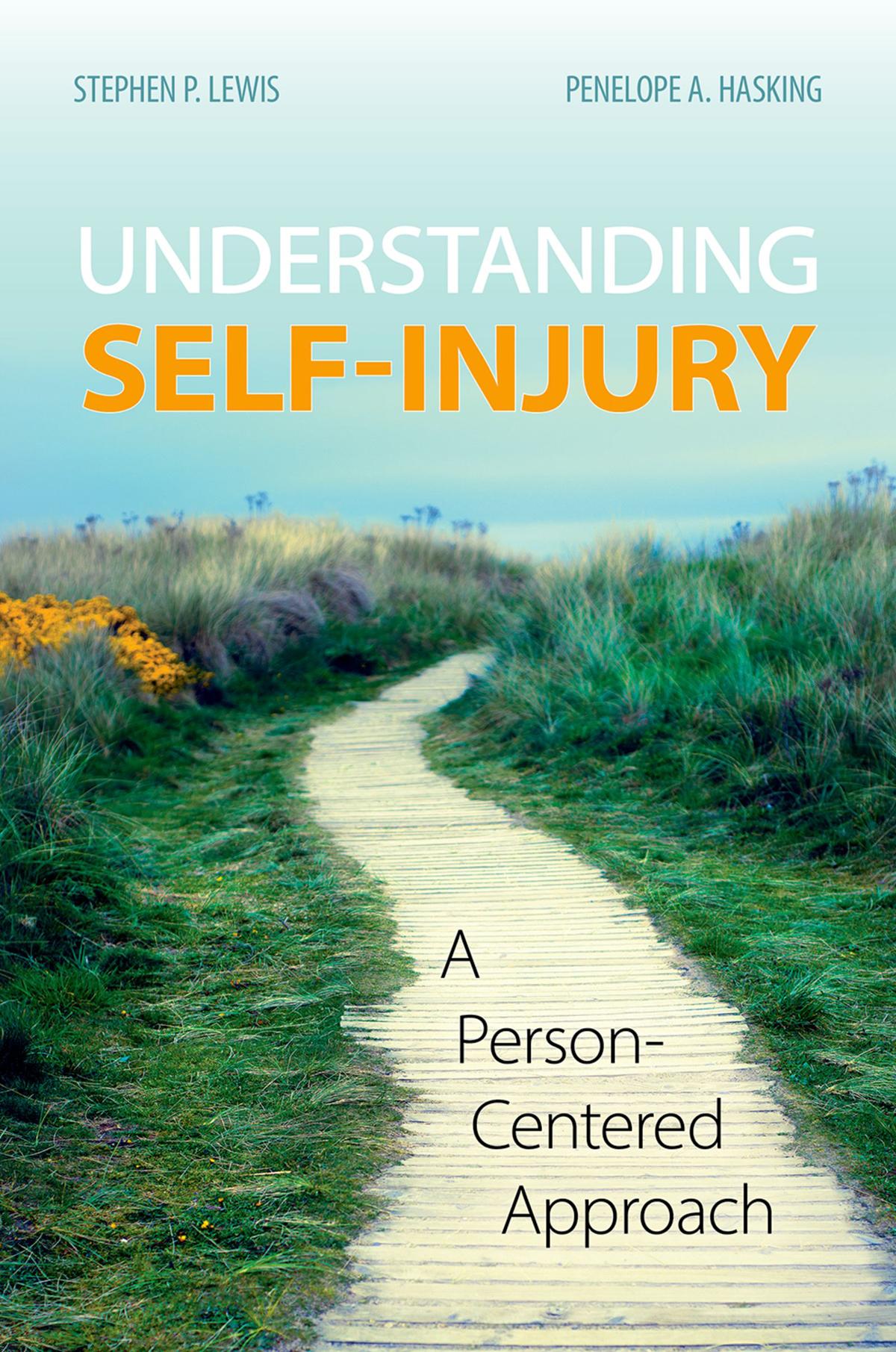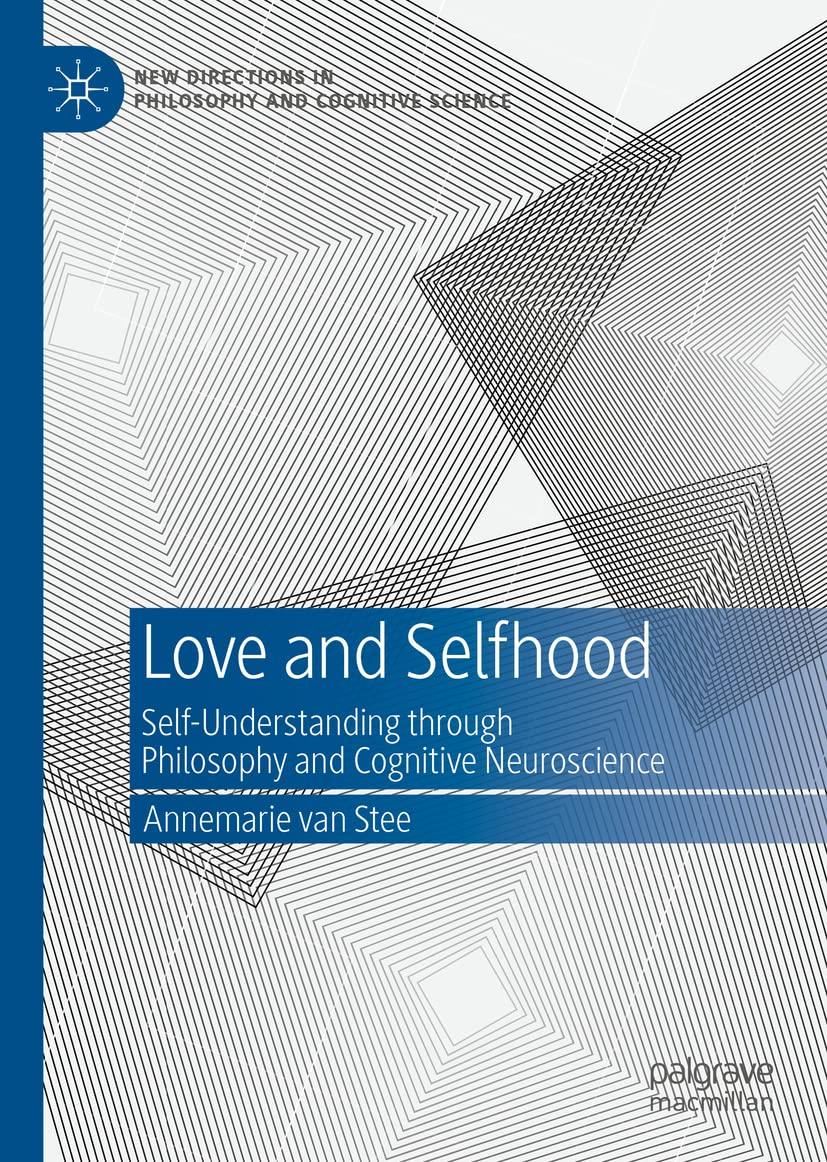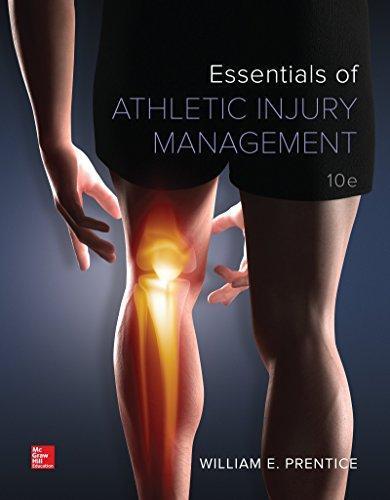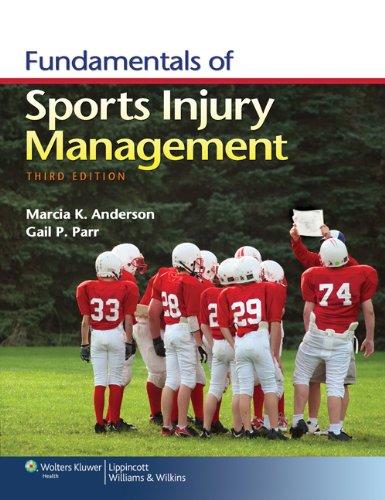Understanding Self-Injury
A Person-Centered Approach
STEPHEN P. LEWIS AND
PENELOPE A. HASKING
Oxford University Press is a department of the University of Oxford. It furthers the University’s objective of excellence in research, scholarship, and education by publishing worldwide. Oxford is a registered trade mark of Oxford University Press in the UK and certain other countries.
Published in the United States of America by Oxford University Press 198 Madison Avenue, New York, NY 10016, United States of America.
© Oxford University Press 2023
All rights reserved. No part of this publication may be reproduced, stored in a retrieval system, or transmitted, in any form or by any means, without the prior permission in writing of Oxford University Press, or as expressly permitted by law, by license, or under terms agreed with the appropriate reproduction rights organization. Inquiries concerning reproduction outside the scope of the above should be sent to the Rights Department, Oxford University Press, at the address above.
You must not circulate this work in any other form and you must impose this same condition on any acquirer
Library of Congress Cataloging-in-Publication Data
Names: Lewis, Stephen P., author. | Hasking, Penelope A., author.
Title: Understanding self-injury : a person-centered approach / Stephen P. Lewis, Penelope A. Hasking.
Description: New York, NY : Oxford University Press, [2023] | Includes bibliographical references and index.
Identifiers: LCCN 2022044716 (print) | LCCN 2022044717 (ebook) | ISBN 9780197545065 (paperback) | ISBN 9780197545089 (epub) | ISBN 9780197545096 (ebook)
Subjects: LCSH: Self-mutilation. | Self-mutilation—Treatment. | Parasuicide. | Parasuicide—Psychological aspects.
Classification: LCC RC552.S4 L49 2023 (print) | LCC RC552.S4 (ebook) | DDC 616.85/82—dc23/eng/20221021
LC record available at https://lccn.loc.gov/2022044716
LC ebook record available at https://lccn.loc.gov/2022044717
DOI: 10.1093/med-psych/9780197545065.001.0001
We dedicate this book to the countless people with lived experience whose resilience and generosity in sharing their stories has allowed us to write this book. Their silent strength is a constant reminder of the need to advocate for a person-centered approach in all aspects of research, clinical practice, and outreach.
List of Illustrations
Preface
1. Self-Injury: An Overview
2. Self-Injury and Suicidal Thoughts and Behaviors
3. A Person-Centered, Strengths-Based Framing of Self-Injury
4. Self-Injury and Stigma
5. Use of Appropriate Language to Discuss Self-Injury
6. Rethinking and Addressing Contagion
7. Self-Injury, the Internet, and Social Media
8. Addressing Self-Injury in Schools: A Student-Centered, Strengths-Based Approach
9. Families and Self-Injury
10. Clinical Approaches for Self-Injury: Assessment and Intervention
11. Self-Injury Recovery: A Person-Centered Framework
12. Building Resilience Through Recovery
13. Supporting People With Lived Experience
14. Advocating for a Person-Centered, Strengths-Based Approach
Postface References Index
LIST OF ILLUSTRATIONS
FIGURES
Conceptualization of self-harm. Joiner’s interpersonal model of suicide. Self-injury stigma framework. Person-centered recovery model.
Components of a person-centered approach when talking about self-injury.
BOXES
Proposed diagnostic criteria for nonsuicidal self-injury disorder. Summary of key considerations regarding reasons for selfinjury.
Overview of psychological approaches. Example questions for a person-centered approach when talking about self-injury.
Reputable online resources for people with lived experience of self-injury.
TABLES
2.1. 2.2. 4.1. 13. 1. 1.1. 1.2. 13. 1. 13. 2. 1.1. 2.1. 2.2. 4.1. 4.2. 5.1. 6.1. 11. 1. 10. 1.
Common intrapersonal and social reasons for self-injury. Practical tips regarding language and asking about suicidal thoughts and behaviors.
Sample safety plan to be individually tailored. Forms and examples of self-injury stigma.
Overview and application of the self-sinjury stigma framework to different forms of stigma.
Appropriate language to use when talking about self-injury. Practical tips for minimizing socialization effects.
7.1.
8.1.
9.1.
9.2.
Recommended resources for people with lived experience of self-injury.
Key elements of a school policy.
What young people think caregivers can do to support individuals who self-injure.
Strategies for families to use and avoid when supporting a child who self-injures.
Considerations for the context of self-injury.
Examples of reframing instances of self-injury.
3. 10. 1. 12.
1. 12. 2. 12. 4.
Example of a decisional balance.
12.
Character strengths can be ranked in terms of the degree to which an individual possesses that strength.
Factors to consider in the decision to disclose self-injury.
PREFACE
Nonsuicidal self-injury (self-injury), the purposeful damaging of one’s own body tissue (e.g., cutting) without suicidal intent, is a behavior that is a concern for countless people. Although it appears to run counter to the human instinct for survival—to avoid getting injured— self-injury can be the very way many individuals survive in the world. Often misunderstood, self-injury is primarily used to cope with intense or unwanted emotions that an individual feels they are not able to deal with in other ways. Not surprisingly then, self-injury is associated with a number of mental health difficulties (e.g., emotion dysregulation, major depression) and is a reliable predictor of subsequent suicidal thoughts and behavior. For these reasons there has been increased attention paid to factors that initiate and maintain self-injury, and a recent focus on factors that might aid recovery.
Over the past two decades, our understanding of self-injury has expanded significantly. Yet, self-injury remains shrouded in much stigma which foments shame, isolation, and hopelessness for countless individuals who self-injure. Accordingly, how we talk about self-injury and respond to individuals who self-injure necessitate an empowering approach conducive to fostering strength, hope, and resilience. In keeping with the recent strengths-based movements toward conceptualizing and addressing mental health difficulties, this book offers a novel person-centered and strengths-based framing of self-injury. In doing so, the book addresses contemporary and often overlooked areas in the field, such as stigma, recovery, and the role of social media in self-injury. Given its applied emphasis, this book will be relevant and useful to anyone working with or supporting people with lived self-injury experience, including: mental health professionals and trainees, school professionals, families, and researchers. We hope people with lived experience of self-injury find this book empowering, and consider sharing it with loved ones.
In the first part of the book we aim to contextualize self-injury In Chapter 1, we start by outlining the most up-to-date understanding of what self-injury is, how common it is, factors that are associated with self-injury, and the relationship between self-injury and suicidal thoughts and behaviors. In Chapter 2, we further delineate self-injury from suicidal behavior, highlighting the similarities and differences between them, and proposing a person-centered way to inquire about suicidal thinking. We then move on to offering a personcentered framing of self-injury. In Chapter 3, we argue that many models of self-injury adopt a medicalized viewpoint—seeing selfinjury as a symptom that needs to be treated and removed. These models frame self-injury as a problem that needs to be fixed, that arises due to some deficit or flaw in the individual (e.g., a history of trauma, lack of coping skills). We argue that a deficit-based approach can, perhaps inadvertently, emphasize vulnerabilities and feelings of worthlessness often held by people who self-injure. We offer readers a strengths-based approach that instead highlights the resilience of people who self-injure. While not dismissing factors that drive self-injury, additionally focusing on strengths can further empower people toward positive change and recovery.
Self-injury remains a highly stigmatized behavior, yet there has been little consideration in the literature regarding how stigma manifests, and the impact this stigma has on people who self-injure. In Chapter 4, we tackle stigma head-on, challenging readers to adopt a nonstigmatizing framing of self-injury. Along similar lines, Chapter 5 draws on recent work highlighting the importance of the language we use when talking about self-injury, and people who selfinjure. Language is a powerful form of communication that helps frame the way we see the world. Stigmatizing, medicalized, or derogatory language—often used unintentionally—can foster shame and reduce the likelihood a person who self-injures will reach out for support. We present readers a guide on appropriate ways to talk about self-injury that foster respect, hope, and resilience. In this way, we hope people who wish to talk about their self-injury are able to receive nonjudgmental, noncritical responses to their disclosures. In Chapter 6, we address the issue of self-injury “contagion.” We present the latest evidence regarding social causes and
consequences of self-injury among peer groups. Following our discussion of appropriate language to use when talking about selfinjury, we consider the pitfalls of adopting a medicalized conceptualization of the social causes and consequences of selfinjury, which is grounded in an infectious diseases model. Instead, we focus on how we can encourage a broader discussion of these social influences and effects associated with self-injury. This includes consideration of societal attitudes, discussion of self-injury in a broader social context, and response to people who self-injure. In Chapter 7 we broaden this discussion to social media. Indeed, there has been much concern about the effect of social media on selfinjury, with many suggesting that online communication about selfinjury can encourage people to engage in the behavior. Yet, others propose that discussing self-injury online can decrease isolation, and assist with recovery. We rely on recent evidence to present both the benefits and risks associated with online communication of selfinjury.
The remainder of this book is focused on applying this personcentered approach across a range of contexts. In Chapter 8 we turn our attention to the roles schools can play in the prevention and early intervention of self-injury. Given self-injury most often emerges in adolescence, schools have become a prime context in which to identify students who self-injure and offer appropriate and timely referral. Yet school staff tell us they are unsure how to respond to self-injury, and are worried about “contagion” if they discuss selfinjury with students. In this chapter we offer guidance for schools in adopting a whole-of-school approach and developing a policy to address and respond to self-injury. Acknowledging that all school staff have a role to play in appropriately addressing and responding to self-injury is important in developing effective school protocols. Extending considerations about caring for people who self-injure, in Chapter 9 we focus on how families can adopt a strengths-based approach in responding to a family member who self-injures. This includes the role of siblings, and consideration of how self-injury can impact family functioning.
Next we shift our attention to the recovery process. We begin Chapter 10 by taking a look at existing treatments for self-injury and
critically appraise the evidence for their use. Against this tradition, there has been a recent move to direct attention away from factors that initiate and maintain self-injury to factors that help promote recovery. Traditionally, the focus of recovery has been on stopping self-injury. However, in Chapter 11, we propose a new way to conceptualize recovery that takes into account not just the behavioral aspect of self-injury but also associated beliefs and expectations about recovery. Building on the person-centered approach, we argue that recovery is an ongoing, nonlinear, individual process. This process is not just about finding alternatives to selfinjury but also involves an understanding that setbacks can be expected, that thoughts and urges to self-injure can be ongoing, that scarring and disclosure of self-injury to others can be challenging, and that self-acceptance and self-compassion are possible. Building on this in Chapter 12, we apply this person-centered model of recovery to how people who self-injure can build resilience.
In Chapter 13 we begin by considering how to support individuals who self-injure. Although many resources are available to help people initiate conversations about self-injury, we acknowledge that supporting someone who self-injures is an ongoing conversation— and one that will change over time. In addition to providing guidance for parents, friends, teachers, and others who care for someone who self-injures, we offer people who self-injure a way to internalize the strengths-based approach in their own interactions with others. This includes considerations regarding disclosures, how to respond to questions about scarring, and the importance of self-care. Finally, in Chapter 14 we emphasize the need for advocacy of the personcentered approach through research, clinical practice, and in the community. We present ways that readers can advocate for people who self-injure, by adopting the person-centered framework, and learning from people with lived experience of self-injury. We hope this will encourage readers to take up the mantle and apply a strengths-based framing of self-injury in their own work and lives. The experience of self-injury is one that is different for each and every person who self-injures. While there are some commonalities, truly understanding self-injury requires that we listen to individuals’ experiences without preconceptions and without judgment. It is time
to challenge the traditional deficit-based models of self-injury and to recognize the strengths, resolve, and resilience that people who selfinjure possess. In doing so we avoid stigmatizing and demoralizing people who self-injure, and instead promote hope, optimism, and support seeking. Our hope is that readers find inspiration in the person-centered approach we present, and are able to take from this framework to apply a new way of thinking about self-injury that can make a significant and lasting impact for people with lived self-injury experience.
SELF-INJURY
An Overview
Before discussing the central framing guiding this book (see Chapter 3), it is first important to provide foundational knowledge about selfinjury. Accordingly, this chapter addresses key areas within the field of self-injury, including how self-injury is defined, who self-injures, what might contribute to self-injury engagement, the reasons people may have for self-injury, and the risks associated with engaging in self-injury. In Chapter 2, we build on this by discussing the link between self-injury and suicide. Collectively, these two chapters provide the groundwork from which to understand and apply the person-centered, strengths-based framework woven throughout the remainder of the book.
WHAT IS SELF-INJURY?
A review of the literature points to numerous terms being used to refer to self-injury. Although having more than one term to refer to a behavior is not necessarily an issue, this becomes a concern when there is definitional inconsistency. Unfortunately, for quite some time, this is what transpired in much of the self-injury literature. We address issues of nomenclature in the next chapter as several of these terms have also been used in the context of referring to suicidal behavior.
Despite the historical confusion about what constitutes self-injury, in 2007, the International Society for the Study of Self-Injury (ISSS) —the preeminent organization in the field—put forward an official definition for nonsuicidal self-injury (NSSI; self-injury).1 Specifically,
self-injury was defined as the deliberate and self-inflicted damage to one’s body tissue in the absence of suicidal intent and for reasons that are not socially or culturally sanctioned. Although “NSSI” is commonly used throughout the literature, for the purposes of simplicity and consistency, we refer to self-injury throughout the book to avoid repeated explanation of an acronym at the outset of each chapter. Thus, subsequent mention of “self-injury” in later chapters is in keeping with the above definition.
Before continuing, a few points about this definition warrant discussion. First, suicidal behaviors (which carry lethal intent) are excluded from this definition. However, it is important to bear in mind, that while distinct, self-injury and suicide are related. Given this, we address the relation between self-injury and suicide in greater detail in the next chapter. Second, a key aspect of the above definition is the exclusion of behaviors that would be otherwise accepted in social and cultural contexts, such as tattooing and body-piercing. Finally, behaviors that can have harmful effects (e.g., substance abuse, smoking) are not included in the definition of self-injury as they do not yield immediate tissue damage and their adverse effects tend to occur over time.
Following the above, what behaviors are encompassed by the definition of self-injury? Although not intended to represent an exhaustive list, the most common methods of self-injury involve cutting, burning, hitting oneself (sometimes referred to as selfbattery), and severe scratching/skin abrading.2,3 Along these lines, it is important to note that there is not a prototypical method of selfinjury. Rather, there is much variability with respect to how people self-injure. Further, some individuals will use just one method of selfinjury, while other people will use multiple methods. In addition, how one self-injures may change over time (e.g., the initial method used may not be the method used through repeated self-injury). Because of this, it is important to avoid generalizing about how people selfinjure and to instead consider people’s unique experiences.
Since the inception and uptake of the aforementioned definition of self-injury, the number of empirical papers published in which the ISSS definition is used has ballooned and has steadily increased each year since.4 It is perhaps unsurprising then that this definition
mirrors the one used in the Diagnostic and Statistical Manual for Mental Disorders (DSM), which we discuss later in this chapter. With this growing literature in mind, we now focus the remainder of this chapter on key aspects of what we have come to learn about selfinjury.
WHO SELF-INJURES?
For quite some time self-injury was primarily viewed as a symptom, and frequently an indicator, of borderline personality disorder (BPD). However, while self-injury is one of nine possible diagnostic criteria for BPD—it is neither necessary nor sufficient for one to receive such a diagnosis. Moreover, most individuals who engage in self-injury do not meet BPD criteria.5,6,7 This then raises the question, who selfinjures? A basic answer is that anyone may self-injure. But, when does self-injury tend to begin and do certain groups report more engagement in self-injury than others? We address these important questions next.
Rates and Age at Onset
The typical age at onset for self-injury is early- to mid-adolescence with another peak during early adulthood.2,8 Although this is when self-injury most often begins it is important to bear in mind that people may start to self-injure at any age. In our own research and outreach work, we have had participants report ages at onset in early childhood and people indicating that they did not start to selfinjure until well into middle and older adulthood (60+ years).9 Indeed, individuals of all ages may self-injure, so it is important to avoid sweeping generalizations and misconceptions that self-injury is circumscribed to specific age groups (e.g., adolescents). While people across the age spectrum may report self-injury, this is not to say that rates are similar across different age groups. According to a large body of research, adolescents and emerging adults consistently report the highest rates of self-injury, with up to one in five individuals in these age groups reporting self-injury at least once. More specifically, the lifetime prevalence of self-injury
among adolescents typically ranges from about 13% and up to 18% in community samples.2,10,11 Among emerging adults, rates tend to hover around 13%.2 However, in university settings rates tend to be even higher with approximately 20% of students reporting selfinjury.2,12
Among adults, findings from several studies have indicated that around 5.5% of adults report having self-injured on at least one occasion.2,13 A similar but slightly lower rate (4.86%) was reported in a recent paper examining the prevalence of self-injury in a community sample of British adults.14 Research examining self-injury among children under 12 years of age is sparser when compared to that involving other age groups. Nevertheless, some researchers have found that among children 8 to 12 years old, about 8% report having self-injured on at least one occasion.15 Children younger than 8 may also self-injure; however, more research is needed to better understand self-injury among younger youth.
Perhaps unsurprisingly, rates among clinical samples tend to be much higher than those cited above. For instance, in some of the field’s earlier published studies, self-injury rates of 40% to 61% were reported among adolescents in inpatient settings.16,17 More recently, researchers have sought to understand rates of self-injury within particular diagnostic groups. For example, in one study about onethird of individuals diagnosed with an eating disorder reported having self-injured;18 similar rates have been reported elsewhere, though individuals meeting criteria for bulimia nervosa (32.7%) were found to have higher rates of self-injury than individuals with anorexia nervosa (21.8%).19 In another study examining self-injury in an inpatient sample of adolescents meeting criteria for personality disorders, the rate of self-injury was 66.4%; however, this was not circumscribed to just BPD.20 Collectively, across the literature there are numerous reports of self-injury rates being higher when comparing a variety of samples comprising individuals from inpatient settings versus community-based settings.
In sum, adolescence and emerging adulthood represent the two age groups during which self-injury tends to begin and most often occur. However, anyone of any age may self-injure. Additionally,
although self-injury rates tend to be higher among inpatient or clinical samples versus community-based samples, rates are nonetheless high in the latter. As addressed in more detail later, self-injury is transdiagnostic in nature. That is, it is not limited to a particular diagnostic group and assumptions that self-injury is a marker for borderline personality disorder—or any disorder—ought to be avoided.
Racial Diversity
Much of the empirical efforts aimed at examining the prevalence of self-injury (and studying self-injury more generally) have, to date, not sufficiently represented racially diverse populations. Of the research conducted to date, however, there is some evidence to indicate that rates of self-injury among Black, Indigenous, and People of Color (BIPOC) are higher than among white people.21,22 However, this should not be assumed as a generality. Findings from two reviews of the literature concerning self-injury among racially diverse groups indicate that different risk (e.g., difficulties with emotion regulation, stigma) and protective factors (e.g., religion, belongingness to one’s community) can influence the rate of self-injury.21,22
Following the above, there is a strong need in the field to work toward more diverse and equitable representation in research efforts. Doing so is an important step toward appreciating and understanding the unique and intersecting contributing factors (e.g., systemic racism; socioeconomic disadvantages) which may associate with both mental health challenges and resilience and thus influence engagement in self-injury Thus, it is not only important to direct more efforts at understanding self-injury among racially diverse populations but also to work toward understanding the context in which self-injury occurs. Beyond working toward greater representation of diversity in terms of which populations are included in future research, efforts to enhance diversity and inclusion are not limited to who takes part in research but also to who conducts research. Doing so ensures historically marginalized voices are appropriately accounted for in all aspects of research. As this is a critical goal in the broader field and when advocating for the person-
centered framework that underpins much of the book’s content, we address this further in Chapter 14.
Sex, Gender, and Sexual Orientation
Previously, it was assumed that self-injury was a behavior primarily enacted by girls and women. Yet, there is now substantial evidence that the proportion of boys and men who self-injure is more or less the same.2,5,23 The same is the case when comparing adult men and women and the proportion of individuals in these groups who report a history of self-injury.13 This is not to say that there are no differences, however. Several studies indicate that there are differences when it comes to the behavioral features (e.g., method) of self-injury. Of note, young men tend to engage in higher rates of self-burning (including branding) and to injure on their torso/chest more often than young women; they also report self-injuring more often when under the influence of substances.23,24 In contrast, young women tend to report more engagement in self-cutting and scratching and to report injuring their wrists and thighs.23,24,25 They also tend to engage in more frequent self-injury and are more apt to talk about self-injury.24,25
It is important to note that many studies reporting on sex and gender differences among people who self-injure have not clearly or consistently demarcated these constructs. As a consequence, it is common to see sex-related terminology (e.g., male, female) to refer to gender and vice versa. Further, many studies have historically adopted a binary approach when reporting on sex and gender. This limits what we know with respect to sex, gender, and self-injury. Indeed, when researchers conflate sex and gender in the presentation of questions asking about participant demographic information or when binaries are used in questionnaires, individuals completing the relevant items may feel unrepresented and potentially marginalized in the research process; indeed, this can impact people’s mental well-being.26 For these reasons, it is incumbent on researchers to ensure clarity when asking about sex and gender and that the questions presented to participants are both accurate and inclusive.
Attention has increasingly been paid to understanding self-injury among lesbian, gay, bisexual, transgender, and queer (LGBTQ+) individuals as well people from gender diverse populations. Findings from a series of reviews have indicated that compared to heterosexual individuals, members of the LGBTQ+ community report higher rates of self-injury.27,28,29 Relatedly, gender diverse individuals also report higher rates of self-injury when compared to their cisgender peers.29 Much like what was mentioned in the discussion on racial diversity and self-injury, it is critical to not draw sweeping conclusions about who may be at higher risk for self-injury when considering sexual orientation and gender diverse people. Indeed, a closer look at the extant literature reveals that some groups may report higher rates of self-injury when compared to others. Specifically, both transgender and bisexual individuals report greater instances of self-injury and are considered at higher risk of self-injury.25,29 Some research has further indicated that trans men may be at especially high risk for self-injury.30 In line with this, transgender youth report high rates of self-injury and broader selfharm, including suicide attempts.31
Inasmuch as it is important to avoid generalizations about who may be at heightened risk for self-injury, it is also critical to account for the context in which self-injury occurs—that is, what may account for why members of the above groups may self-injure. While more research is needed to understand self-injury among members of the LGBTQ+ and gender diverse communities, the extant literature points to several considerations (e.g., minority stress, stigmatization because of one’s sexual orientation or gender identity) that contribute to this risk.27,28,29 Commensurate with attention to the context in which self-injury occurs, an array of considerations warrant attention when understanding what may lead to people engaging in self-injury. We address these in the subsequent section.
WHAT CONTRIBUTES TO SELF-INJURY?
There is significant variability and complexity with respect to what confers risk for self-injury. Indeed, there is not a single factor, nor set of factors, that consistently underlie and thus explain self-injury.
Rather, multiple, and often intersecting considerations contribute to engagement in self-injury. For these reasons, no two people who engage in self-injury will be identical—even if (many) aspects of their experience are similar. Accordingly, it is essential that assumptions are avoided when it comes to what may have contributed to any one person’s self-injury. Nevertheless, there are several potential risks factors for self-injury as well as risks of self-injury that merit discussion as they can help to better understand what may be involved in people’s lived experience. Therefore, we now turn to an overview of some of the more commonly cited factors that can play a role in self-injury engagement.
Self-Injury and Mental Health Difficulties
Perhaps unsurprisingly, self-injury is associated with a wide range of mental health difficulties. Examples from several reviews and seminal texts include but are not limited to anxiety, difficulty with coping and managing emotion, self-criticism, impulsivity, and negative body image.5,32,33,34,35,36 Similarly, self-injury can also occur in the context of mental disorders. But, as previously mentioned, self-injury is not limited to specific forms of mental disorders, such as BPD, as was previously thought. Indeed, selfinjury has been found to co-occur with eating disorders, major depression, post-traumatic stress disorder, and substance abuse, among other forms of mental illness.5,32,33,34,35,36,37,38,39 Thus, selfinjury is transdiagnostic in nature. Importantly, although it is the case that self-injury is associated with an array of mental disorders, just because someone self-injures does not mean that a mental disorder is present. Many individuals will self-injure but not meet criteria for a mental disorder.5,32,33,34,35
Outside of its association with both mental health difficulties and mental disorders, self-injury has also been found to share a relation with numerous adversities and difficult life events. For example, selfinjury has been shown to correlate with having attachment difficulties, parental criticism, and parent loss.5,32,33,34,35 For quite some time it was also presumed that self-injury was the manifestation of childhood trauma—in particular, childhood sexual
abuse.40,41,42,43,44 Research, however, has indicated otherwise.34,45 Certainly, self-injury associates with trauma, including childhood sexual abuse; in other words, people who have experienced such trauma are at elevated risk for self-injury. However, trauma in the form of childhood sexual abuse is not a unique predictor of selfinjury.34,45 Rather, researchers have demonstrated that this link is better accounted for by depression, post-traumatic symptoms, and other interpersonal factors.39,45 Engagement in self-injury also associates with other forms of trauma (e.g., emotional and physical abuse, bullying), yet the presence of self-injury should not signal that one has a history of trauma.5,32,33,34,35 Not all individuals who selfinjure necessarily have these experiences.5,32,33,34,35
Self-Injury as a Standalone Diagnosis
There have been many cases made to have self-injury included as a formal diagnosis, much like major depression or post-traumatic stress disorder.46,47,48,49,50 Although initial efforts did not result in the inclusion of self-injury within the diagnostic nomenclature this changed in 2013, with the publication of the Fifth Edition of the Diagnostic and Statistical Manual of Mental Disorders (DSM-5). Although not technically a mental disorder, Non-Suicidal Self-Injury Disorder was included in Section 3 of the DSM-5 as a condition warranting further research.51 Box 1.1 outlines the proposed criteria for NSSI Disorder.
Box 1.1 P������� ���������� �������� ��� ����������� ����-������ ��������.
In last year, the individual has, on ≥ 5 days, engaged in intentional self-inflicted damage to the surface of body of a sort likely to induce bleeding, bruising, or pain (e g , cutting, burning, stabbing, hitting, excessive rubbing), with the expectation that the injury will lead to minor-moderate physical harm (i e , no suicidal intent)
The individual engages in the self-injurious behavior with one or more of the following expectations:
To obtain relief from negative feeling/cognitive state.
To resolve an interpersonal difficulty.
To induce a positive feeling state.
The intentional self-injury associated with ≥1 of: Interpersonal difficulties or negative feelings or thoughts occurring immediately prior to the act
Prior to engaging in the act, a period of preoccupation with the intended behavior that is difficult to control. Thinking about self-injury that occurs frequently, even when it is not acted upon
Not socially sanctioned or limited to scab-picking, nail biting Behavior or its consequences cause significant distress or interference in key areas of functioning. Not limited to psychotic episodes, delirium, substances. In neurodevelopmental dx, behavior not repetitive stereotypy. Not better explained by other mental/medical condition
Pursuant to this, much research has examined the utility, reliability, and validity of the proposed DSM-5 criteria for NSSI Disorder.46,49,50,52,53,54 Evidence from these efforts have demonstrated that the proposed NSSI Disorder can be meaningfully
differentiated from other mental disorders such as BPD.49,53,55,56 and that many of the criteria carry research and clinical usefulness.46 Collectively, there appears to be a growing likelihood that NSSI Disorder will be formally incorporated in a future revision to the DSM.52,54,55,57
Despite the many studies investigating NSSI Disorder, it is critical to consider how individuals with lived experience view the prospect of self-injury being diagnosed as a mental disorder Some of our research has shown that people with lived experience see both advantages and disadvantages about this.58 Among the potential advantages, people who self-injure highlight the possibility that NSSI Disorder being included in the DSM could result in greater understanding of self-injury (e.g., through more research funding). They also indicate that this may work to legitimize people’s experience and enhance both help-seeking and treatment. Regarding the disadvantages, however, some individuals with lived experience have expressed caution that inclusion of self-injury as a diagnostic category may foment stigma and undermine the many factors underlying self-injury—including those discussed in this chapter. Thus, if (and seemingly when) self-injury is adopted as a formal mental disorder, it will be vital that researchers and clinicians work to address these concerns.
REASONS FOR SELF-INJURY
As we unpack further in Chapter 4, self-injury is unfortunately and commonly stigmatized.59 One of the many consequences of this are particular myths and misconceptions regarding why people selfinjure. Perhaps the most common of these is that self-injury is inaccurately viewed as attention-seeking and manipulative in nature.60,61 These views are in sharp contrast to a robust literature— including comprehensive review papers—that points to myriad reasons for self-injury.62,63 Furthermore, rendering self-injury attention-seeking and manipulative is reductionistic and unhelpful, as these views place fault and blame on the individual (e.g., for doing
something wrong or that they should not) and fail to capture the context in which self-injury occurs.
A review of the literature highlights that there are numerous reasons for self-injury (see Table 1.1). Most often these have been conceptualized as falling into two overarching categories, namely intrapersonal reasons and social (or interpersonal) reasons for the behavior. Of these, there is significant evidence that intrapersonal reasons are more commonly reported. Along these lines, by and large, the most frequently cited reason that people give for self-injury is that it is used to obtain temporary relief from unwanted and often intense and very painful emotional experiences.63 In other words, self-injury is used as a coping strategy. Indeed, many people report that in response to strong emotions (e.g., anxiety, distress, sadness) they turn to self-injury, which yields ephemeral relief from these states.
Table 1.1. C����� ������������� ��� ������ ������� ��� ����-������ (T��� �� ��� �������� �� �� �� ���������� ����).
Examples of Intrapersonal Reasons
To cope with and obtain relief from intense emotional experiences (e.g., distress, anxiety)
To punish oneself and express self-criticism or selfloathing
To stop feeling dissociated, depersonalized, or emotionally numb; to feel something when feeling numb or dissociated; to “feel real”
To avoid acting on suicidal thoughts or urges
Examples of Social Reasons
To communicate that one is in pain or struggling to cope
To communicate a need for support
To demonstrate toughness to others
Supporting the view of self-injury as a coping strategy is a substantial body of research.62,63 This entails a corpus of self-report studies64,65,66 as well as lab-based studies in which findings indicate that both people who have and who have not self-injured experience less aversive emotion following exposure to a pain-inducing task.67,68,69 In concert with this, there is empirical support that pain can be effective in alleviating difficult emotions. This is especially the
case for individuals who report more self-criticism, which is both common and typically higher among people who self-injure.70,71 It is therefore understandable that individuals who engage in self-injury will turn to self-injury during instances of emotional pain. Indeed, self-injury works to cope with these experiences, as it reduces intense and difficult emotions. Before discussing other reasons for self-injury, while emotional pain is typically implicated in the context of self-injury engagement, it should not be assumed that this is the only emotional experience preceding self-injury. A range of emotions may also occur prior to self-injury (e.g., frustration, anger, sadness, anxiety).62,63
Perhaps the second most common reason reported for self-injury is to punish oneself or to express self-loathing.62,63 As alluded to earlier, many individuals with lived experience of self-injury report high levels of self-criticism; correspondingly, it is not uncommon for people to also report hating themselves.72 In these cases, self-injury may be used to either demonstrate or express self-criticism or selfloathing. At the same time, self-injury may be similarly used to cope with these intense and potentially overwhelming emotional experiences. Hence, self-injury may serve more than one purpose at a given time.
Beyond these intrapersonal reasons for self-injury, others warrant some attention. Among these is that for some people, self-injury is used to alleviate feelings of dissociation, depersonalization, or emotional numbness. It may also be used to generate a feeling during these psychological states (e.g., to feel real or alive versus feeling numb). Additionally, self-injury may serve as a means to mitigate suicidal thoughts and to avoid acting on them.62
Finally, as mentioned earlier, self-injury may be engaged in for interpersonal reasons. Although typically less frequently reported, this can involve self-injuring to communicate pain or a need for help, to establish boundaries between the self and others, and to signal toughness to others.62,64,65 Because self-injury can have interpersonal reasons, this may also help to explain—though not excuse—some of the myths regarding self-injury, notably those mentioned earlier such as self-injury being misconstrued as a form of
attention-seeking or manipulation. For example, an attempt to communicate that one is in emotional pain through an act of selfinjury may be dismissed as attention-seeking. However, for some people, it may be immensely difficult to articulate how much pain they are experiencing; they may not know how to do this. Hence, self-injury may be used to express the gravity of their pain, only for this to be viewed in stigmatizing or otherwise unhelpful ways.
At this point, it should be clear that people self-injure for many different reasons. Along these lines, there are several considerations to keep in mind when understanding why people self-injure; these are summarized in Box 1.2. First, while we have focused on the more frequently cited reasons in the literature, the reasons discussed thus far should not be viewed as an exhaustive list. Indeed, people may have other reasons for self-injury. Second, people may self-injure for more than one reason. On the one hand, this may mean that the reason for self-injury may differ across contexts; it may be that self-injury serves more than one purpose at a given time. For example, people may self-injure in response to intense self-criticism to both express how they feel but also obtain relief from the pain that comes with this view of self. Third, the initial reason(s) for self-injury may differ from those involved in its repetition. For instance, someone might initially self-injure to cope with emotional pain but later use the behavior to avoid acting on suicidal urges. Thus, people’s reasons may change, and these changes may occur at different points (i.e., not limited to the initial onset and then repetition of self-injury).
Box 1.2
S������ �� ��� �������������� ��������� ������� ��� ����-������.
Reasons For Self-Injury: Key Considerations
Although people most often report using self-injury to cope with painful emotions, this should not be assumed. There are many reasons for self-injury. People often self-injure for more than one reason
The initial reason for self-injury may differ from the reason(s) self-injury continues
Reasons for self-injury may vary across contexts and time
People may have difficulty explaining why they self-injure (e g , due to stigma, not knowing how to express underlying difficulties)
It is also important to bear in mind that sometimes individuals may have difficulty expressing why they self-injure. This is understandable. It can be hard to share experiences that are painful or that are stigmatized, and it can be difficult for people without lived experience to fully understand why someone might intentionally hurt themselves. One final note regarding reasons for self-injury pertains to how people describe why they self-injure. Much of what we summarize in this section of the chapter comes from research using questionnaires or interviews that ask direct questions about why someone might self-injure. However, the language used in these approaches may not perfectly align with how someone might describe their experience. Therefore, when trying to understand someone’s reasons for self-injury, situating them as an expert in their own experience and actively listening to their description of what self-injury does for them is essential.
CONSEQUENCES OF SELF-INJURY
Beyond what may contribute to initial and continued self-injury, there is also a range of consequences that stem from self-injury itself. Certainly, by virtue of engaging in self-injury, individuals are at risk for a range of injury types which will vary based on the self-injury method and medical severity. Relatedly, self-injury may result in residual scarring. A growing body of research indicates that scarring from self-injury is highly salient among many people with lived experience. For example, it may play a role in the context of recovery as well as in the stigmatization of self-injury.73,74,75,76 In line with scarring being involved in the context of stigma, self-injury, in
general, can evoke significant stigma.59 In this way, individuals who self-injure may experience stigma from others as well as internalized stigma. For these reasons, we address stigma and recovery in a more fulsome manner in Chapters 4 and 11, respectively. Outside of this, individuals who engage in self-injury are also at greater risk for suicide. Given the centrality of this risk and the import of understanding how self-injury and suicide are interrelated, we dedicate the next chapter to this topic.
SUMMARY
Notwithstanding the documented myths and misunderstandings concerning self-injury, the significant strides in research over the past decade or so have vastly increased our understanding of selfinjury. These collective research efforts have established that selfinjury is a common, serious, but highly complex behavior. Numerous factors can contribute to self-injury and each person’s experience will be, to varying degrees, unique. Likewise, people may have different reasons for self-injury (with some people having more than one reason or reasons that change over time). Given this, and congruent with recent shifts in the field, a person-centered approach—that emphasizes people’s lived experience—is needed when understanding self-injury and in the context of supporting people who self-injure.77,78,79,80 In our view, doing so is paramount to ensuring people with lived experience are supported and understood. Hence, we have structured this book to facilitate and deepen how self-injury is understood while also providing practical information that can promote greater well-being and better outcomes for people with lived experience.
SELF-INJURY AND SUICIDAL THOUGHTS AND BEHAVIORS
AN ISSUE OF TERMINOLOGY
Historically, exploration of self-inflicted harm has been hampered by definitional inconsistency and ambiguity. In fact, self-injury holds the unfortunate position of having countless terms used to describe a behavior. Among the terms used throughout the literature are: “selfmutilation,” “self-inflicted violence,” “self-abuse,” “deliberate selfharm,” “self-harm” (with the “deliberate” qualifier seen as implicit), “nonsuicidal self-injury,” “self-injury,” and “parasuicide.” In some cases, self-injury has simply been referred to as cutting, fostering the misunderstanding that cutting is the only form of self-injury. Terms such as “self-mutilation” and “parasuicide” quickly fell out of favor as they were considered pejorative, and seen as unhelpful by people with lived experience of these behaviors.
Today, the terms “self-harm” and “non-suicidal self-injury” (NSSI or simply “self-injury”) are more commonly used. Yet there is still confusion regarding which behaviors constitute self-harm. For some, self-harm means any nonfatal, self-inflicted behavior irrespective of intent (including suicide attempts1); others include only behaviors enacted without conscious suicidal intent.2 As seen in Figure 2.1, self-harm might best be conceptualized as a broad umbrella term that encompasses self-injury, poisoning, suicide attempts, and culturally or socially appropriate forms of harm (e.g., religious or cultural practices). To aid in the differentiation of these behaviors, the International Society for the Study of Self-Injury2 explicitly defined self-injury as the deliberate, self-inflicted damage to body tissue without suicidal intent, and for purposes not socially or culturally
